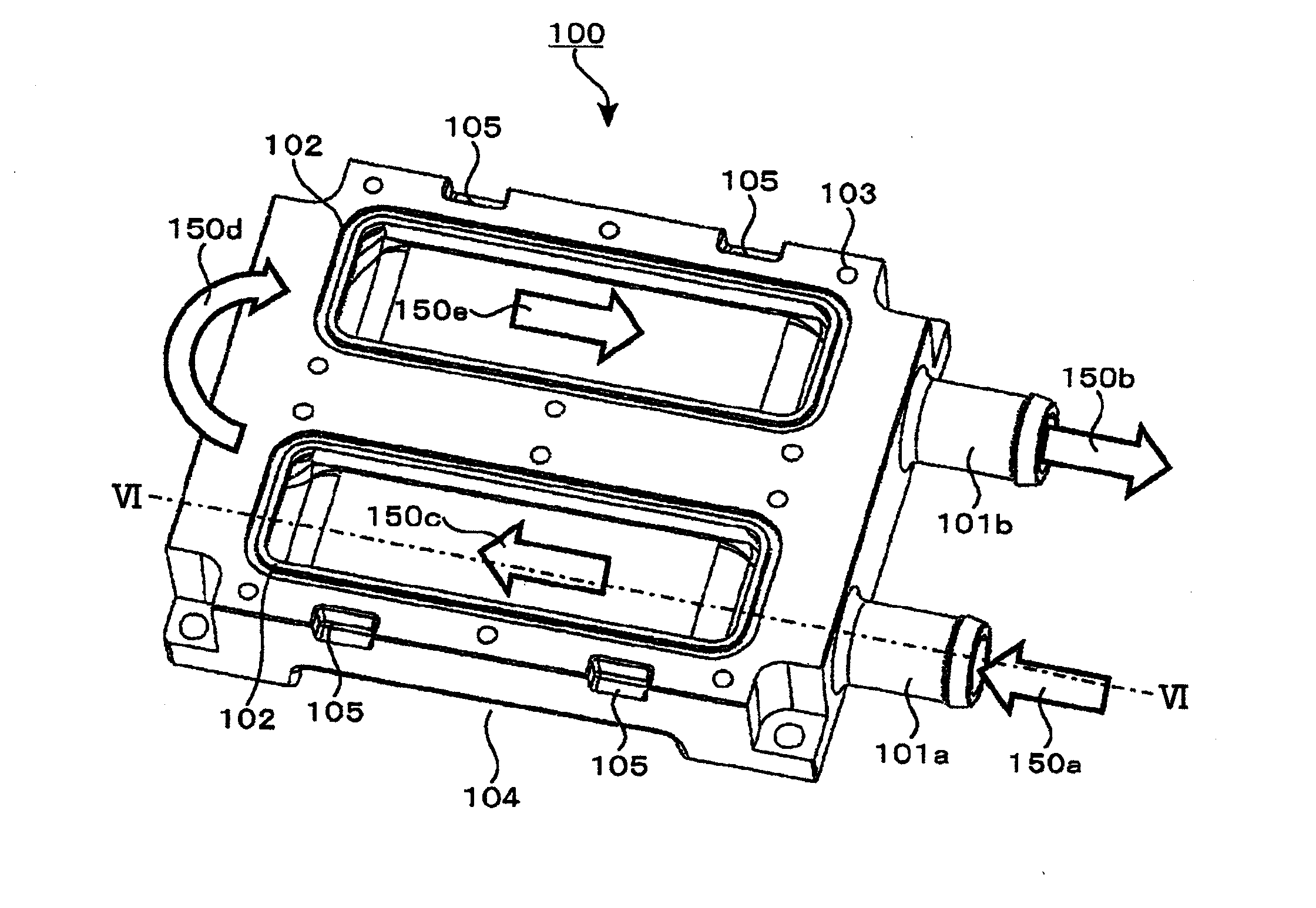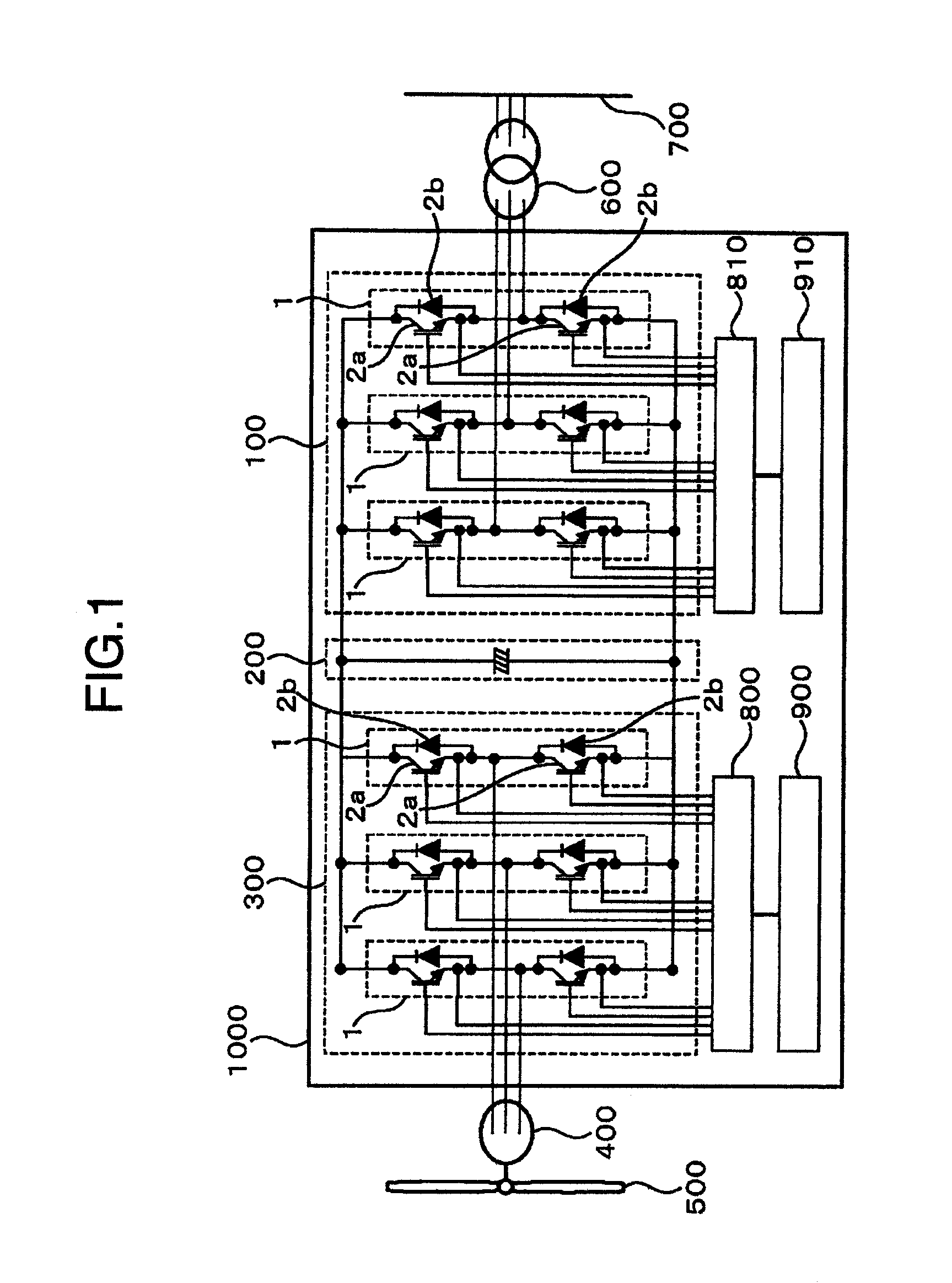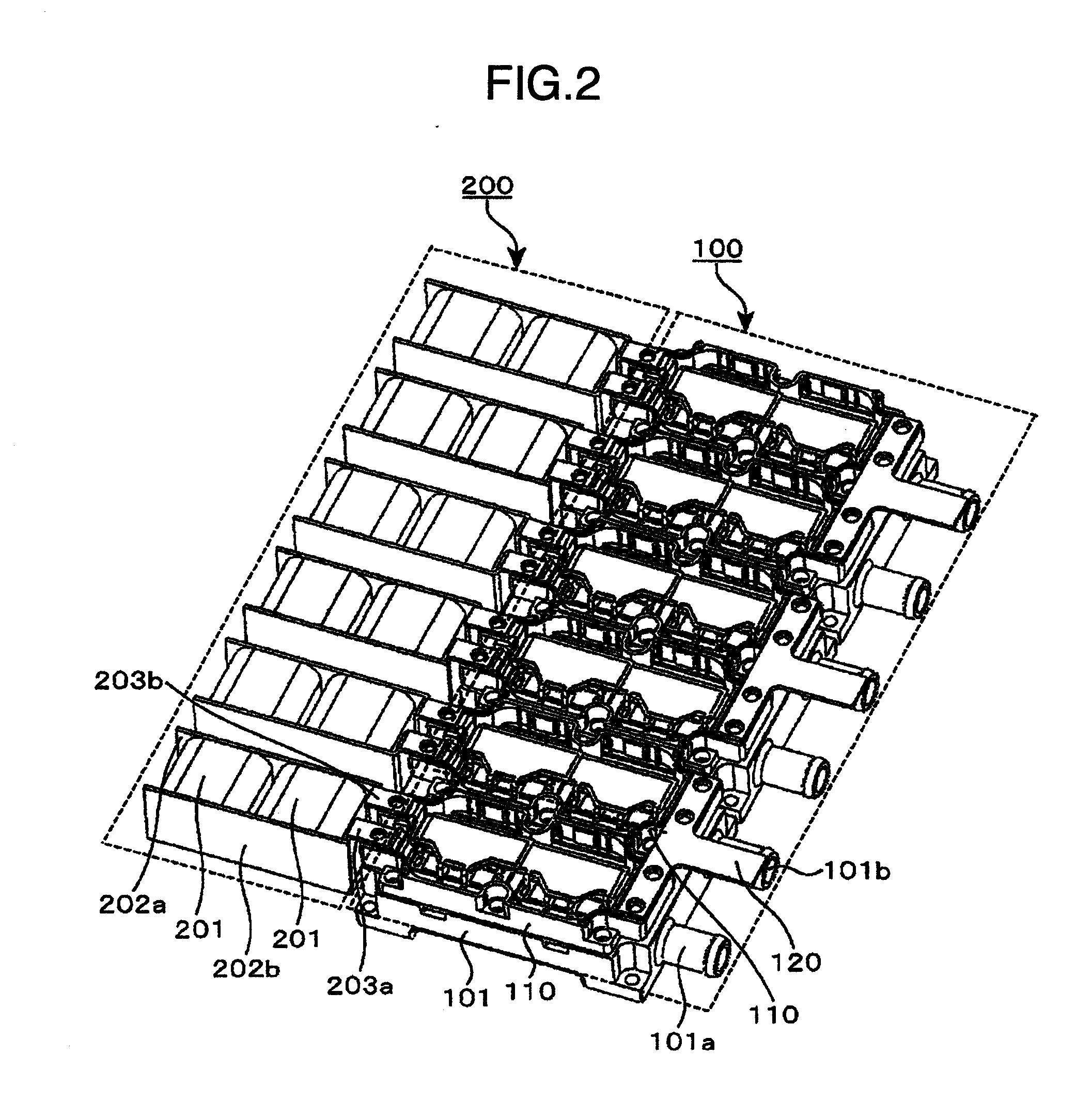Semiconductor Power Module, Inverter/Converter Including the same, and Method of Manufacturing a Cooling Jacket for Semiconductor Power Module
a technology of semiconductor power modules and inverters, which is applied in the direction of manufacturing tools, semiconductor/solid-state device details, lighting and heating apparatus, etc., can solve the problems of large thermal resistance, increased loss, and problematically poor assembling quality, and achieve the effect of reducing loss
- Summary
- Abstract
- Description
- Claims
- Application Information
AI Technical Summary
Benefits of technology
Problems solved by technology
Method used
Image
Examples
first embodiment
(A first embodiment)
Embodiments of the invention will be described hereinafter with reference to the drawings.
FIG. 1 is a view showing an example of a circuit block configuration of an inverter / converter according to a first embodiment of the invention. As shown in FIG. 1, an inverter / converter 1000 is connected to a blade 500 and a transformer 600 to comprise the blade 500, which is rotated by wind power, a generator 400, which generates an AC current from torque obtained by the blade 500, a converter module 300, which converts an AC current supplied from the generator 400 into a DC current, a condenser module 200, which stabilizes and flattens a DC current supplied from the converter module 300, and an inverter module 100, which generates an AC current of a predetermined frequency from a DC current. The AC current obtained from the inverter / converter is converted into a predetermined voltage by the transformer 600 to be fed to an external, electric power system.
In the converter mo...
second embodiment
(A second embodiment)
FIG. 11 is a cross sectional view, similar to FIG. 6, of a single phase inverter module in the case where heatsinks without fins are mounted. As compared with the first embodiment, reduction in heating surface area is achieved according to an extent, to which the heatsink fins 4b are removed, to lead to degradation in cooling performance but reduction in cost is expected since heatsinks 4 can be made simple in shape provided that power semiconductor elements being an object to be cooled are cooled to a necessary extent. In this case, a distance 109b between heatsink bases 4a and the cooling jacket 101 is preferably at least 0.5 mm in view of prevention of dust clogging and prevention of cavitation erosion. For example, in the case where the width of a flow passage is 30 mm and the rate of flow is 1.0 L / min, an average flow velocity is about 1.1 m / s when the distance 109b between the heatsink bases 4a and the cooling jacket 101 is 0.5 mm, and thus the average flo...
third embodiment
(A third embodiment)
FIG. 12 is a cross sectional view, similar to FIG. 6, of a single phase inverter module in the case where heatsinks without fins are mounted and a flow velocity increasing member is provided. In the present embodiment, a flow velocity increasing member 5 is provided in addition to the second embodiment whereby heat transfer is made possible in a state of turbulence with Reynolds number of 2000 or more and an improvement in cooling performance can be achieved.
PUM
| Property | Measurement | Unit |
|---|---|---|
| draft angle | aaaaa | aaaaa |
| thickness | aaaaa | aaaaa |
| creeping distance | aaaaa | aaaaa |
Abstract
Description
Claims
Application Information
 Login to View More
Login to View More - R&D
- Intellectual Property
- Life Sciences
- Materials
- Tech Scout
- Unparalleled Data Quality
- Higher Quality Content
- 60% Fewer Hallucinations
Browse by: Latest US Patents, China's latest patents, Technical Efficacy Thesaurus, Application Domain, Technology Topic, Popular Technical Reports.
© 2025 PatSnap. All rights reserved.Legal|Privacy policy|Modern Slavery Act Transparency Statement|Sitemap|About US| Contact US: help@patsnap.com



